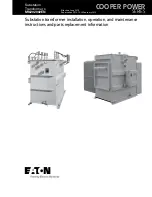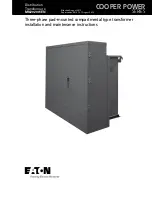
TXP-WTA_Instruction_Manual_(Rev1.3)
REV – 1.3
[34-2900-0207-4 ]
45
|
P a g e
Figure 10-2 – Dipole Antenna Installation Diagram
10.1.2
Yagi Antennas
NOTE: Care needs to be taken to ensure the Yagi is aligned correctly to achieve optimum performance. If a Yagi has
drainage holes in the dipole element, do not mount with the drain hole up. It can fill with water and cause a
negative impact on radio effectiveness.
Key Qualities & Notes
•
Directional along the central beam of the antenna.
•
Folded element is located towards the back.
•
Antenna should be pointed in the direction of the transmission.
•
In networks spread over wide areas, it is common for a central unit to have an omni-directional antenna and
the remote units to have Yagi antennas.
NOTE: In the case of having an omni-directional antenna, as the omni-directional antenna will be mounted
with vertical polarity, then the Yagi antennas must also have vertical polarity.
•
Two Yagi antennas can be used for a point-to-point link.
NOTE: In the case of two Yagi antennas being used, they can be mounted with the elements horizontally to
give horizontal polarity.
•
Should be mounted with at least 1 to 2 wavelengths of clearance from other objects.
NOTE: There is a large degree of RF isolation between horizontal and vertical polarity (approx. –30dB) so this
installation method is a good idea if there is a large amount of interference from another system close by
transmitting vertical polarity.
Figure 10-2 – Yagi Antenna Installation Diagram








































